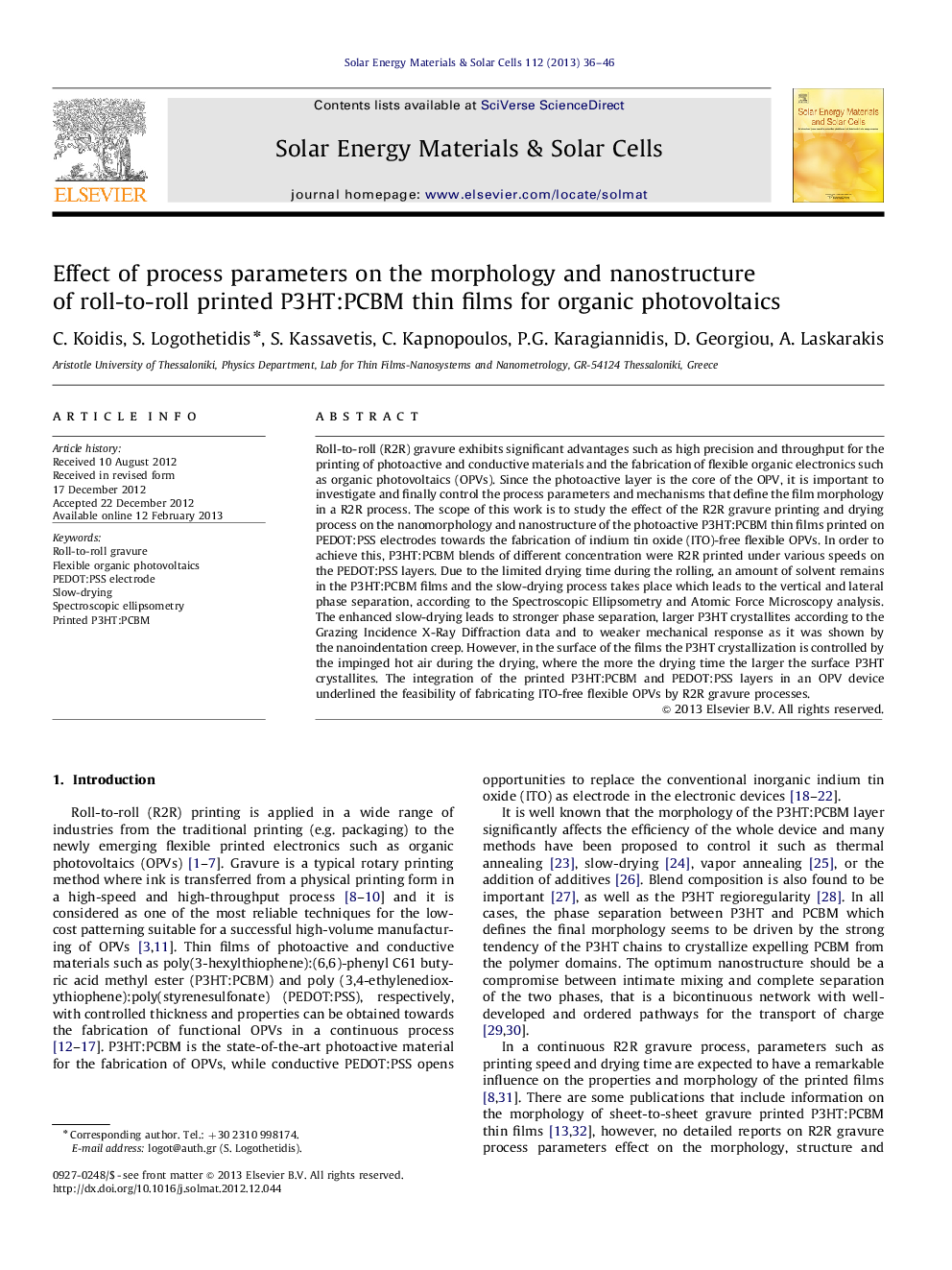| Article ID | Journal | Published Year | Pages | File Type |
|---|---|---|---|---|
| 78518 | Solar Energy Materials and Solar Cells | 2013 | 11 Pages |
Roll-to-roll (R2R) gravure exhibits significant advantages such as high precision and throughput for the printing of photoactive and conductive materials and the fabrication of flexible organic electronics such as organic photovoltaics (OPVs). Since the photoactive layer is the core of the OPV, it is important to investigate and finally control the process parameters and mechanisms that define the film morphology in a R2R process. The scope of this work is to study the effect of the R2R gravure printing and drying process on the nanomorphology and nanostructure of the photoactive P3HT:PCBM thin films printed on PEDOT:PSS electrodes towards the fabrication of indium tin oxide (ITO)-free flexible OPVs. In order to achieve this, P3HT:PCBM blends of different concentration were R2R printed under various speeds on the PEDOT:PSS layers. Due to the limited drying time during the rolling, an amount of solvent remains in the P3HT:PCBM films and the slow-drying process takes place which leads to the vertical and lateral phase separation, according to the Spectroscopic Ellipsometry and Atomic Force Microscopy analysis. The enhanced slow-drying leads to stronger phase separation, larger P3HT crystallites according to the Grazing Incidence X-Ray Diffraction data and to weaker mechanical response as it was shown by the nanoindentation creep. However, in the surface of the films the P3HT crystallization is controlled by the impinged hot air during the drying, where the more the drying time the larger the surface P3HT crystallites. The integration of the printed P3HT:PCBM and PEDOT:PSS layers in an OPV device underlined the feasibility of fabricating ITO-free flexible OPVs by R2R gravure processes.
► Morphology and nanostructure of R2R printed P3HT:PCBM films were studied. ► Drying time during rolling defines the phase separation in the P3HT:PCBM films. ► P3HT crystallinity in the bulk of the films is defined by the slow-drying process. ► Surface crystallinity is defined by the hot air impingement during drying stage. ► Feasibility of flexible OPVs with printed PEDOT:PSS electrodes was reported.
